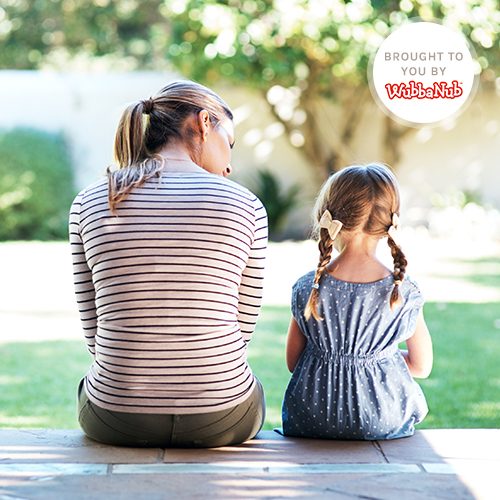When is a good time to start teaching your children about body positivity? Well, pretty much right from the get-go! The body/life positivity movement has gained a lot of traction in the last few years and we could not be happier about that! Sure, choosing to be positive sounds nice in theory but some days are harder than others. The best way is to practice it as part of your daily ritual and find ways to incorporate it into your life and pass it along to your children.
How Do You Think of Your Body?
When I think of body positivity I try to avoid thinking of my body in terms of weight or size but, instead, of what it can do, what it is capable of. Sure, I can’t run an eight-minute mile, but living in a big city I use my body as my main mode of transportation, walking around six miles a day. That’s pretty impressive! What are the things your body can do? Can you hold two kids at the same time? That’s pretty remarkable! The first thing to do is to stop measuring yourself against someone else and start being grateful for the things your body can do. There is always something to be excited about. So think about the ways your body is special, write it down and remind yourself as often as you can.
Body Positivity Isn’t Just for Girls
Sure, a lot of the focus in marketing and in counter-marketing is about how unrealistic images can affect girls and women, but that’s not to say that boys and men are immune to such images. An easy trap to fall into is gendered expectations: Boys are strong, girls are pretty. It’s an old standard and while we’ve come along way, you can still see this trope everywhere. Walk down the toy aisle of any store and you can see how early these stereotypes start to find their way into your shopping cart.
This Might Surprise You
One of the things we think about when it comes to body positivity is words to avoid. Words like “skinny” or “fat” are easy to catch yourself saying, but the larger question is how we use coded language to put a premium on a certain body type. Avoiding any mention of how bodies differ can actually do the opposite from what you’re intending. Try removing the stigma from body commentary by thinking of it as a statement of fact. Jane has brown hair. Michael is taller than John. The power of the words mentioned at the top is that they’re pejorative, and they can be used to hurt people. But if you can teach your children to think of words like “bigger” as simply a descriptor you can remove the power these words have.
There’s No Baseline
It’s perfectly natural to use yourself and your community as the basis for how you describe people. If you’re a tall person with brown hair, it can be easy to describe people in opposition to what you see every day in the mirror. And when you see the same advertisements over and over again that don’t represent you feeling as though you are the opposite of what is “normal” is hard to escape.
For adults, this type of unlearning can take years, but for children getting ahead of this is pretty simple. Avoid only describing children that don’t look like your own, and instead focus on the ways each is unique. If your son or daughter has a new friend, ask what makes them special. This will not only allow them to think of their friends, and themselves, through a lens that doesn’t focus on appearance, it will give you an insight into how your children relate to other people. Of course, describing someone by their appearance is a good shorthand, just make sure you’re doing it across the board and not in opposition to what may seem typical to you. This can create a sense of uniqueness in your child while also undercutting the apprehension around someone who looks, behaves, or has different needs than your child is familiar with.
